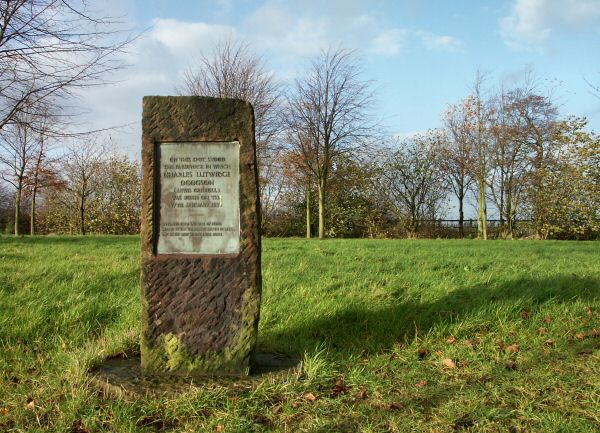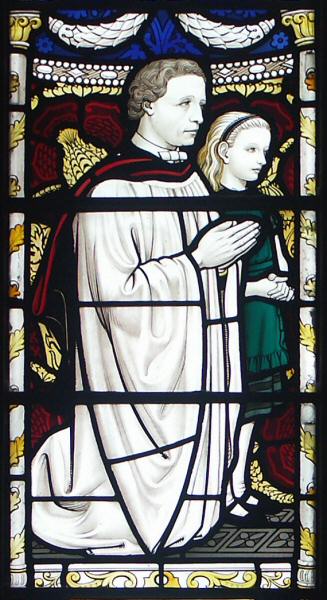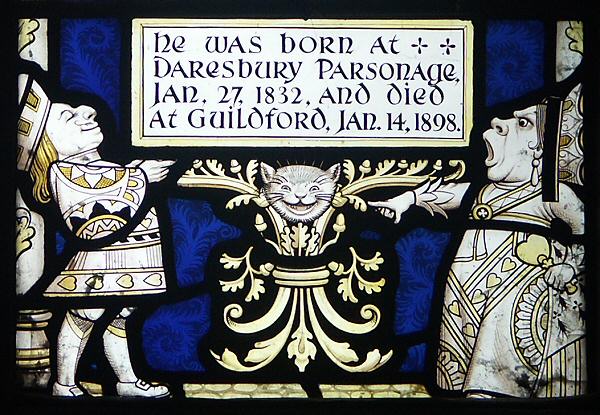

|
AN ISLAND FARM 'MID SEAS OF CORN' SWAYED BY THE WANDERING BREATH OF MORN, THE HAPPY SPOT WHERE I WAS BORN. |
The parsonage was destroyed by fire in 1883, long after the Dodgson family had left. The site remains empty, the replacement parsonage was built near the church. A plan displayed on the original site shows the old parsonage to have been a large building. It comprised family living accommodation, the extensive kitchens and pantries of a good quality home of its period, a study, a school room, a stable for two horses, and a shippon for four cows. The stable would have provided the means of transport for the parson to tour his large rural parish. The shippon, and the location of the old parsonage in farmland some distance from the church, indicates that the parson looked after more that his pastoral flock.
Charles most probably received his early schooling in the school room, alongside his ten brothers and sisters and other local children. In addition to schooling and attendance at church, he would have had daily tasks involving household chores, looking after his younger brothers and sisters, and care for the farm animals. These tasks, on which others depended, could have made him feel a valued member of the family unit, a feeling less likely to be felt by modern youngsters. There were other advantages to living in a less mechanised, more civilised age. In his spare time he would have had more freedom than do many modern children. Freedom to roam the countryside. Long trips through the lanes and fields, either alone or with others. On these trips he would more than once have stepped into a hidden rabbit hole, or spotted a cat spying from a tree. Later in life, Charles in Oxford writing about the White Rabbit and the Cheshire Cat, was probably recalling these times and this countryside.


| Two details from the Lewis Carroll memorial window in All Saints Church, Daresbury. The upper detail shows Lewis Carroll, kneeling, and Alice Liddell, standing. |